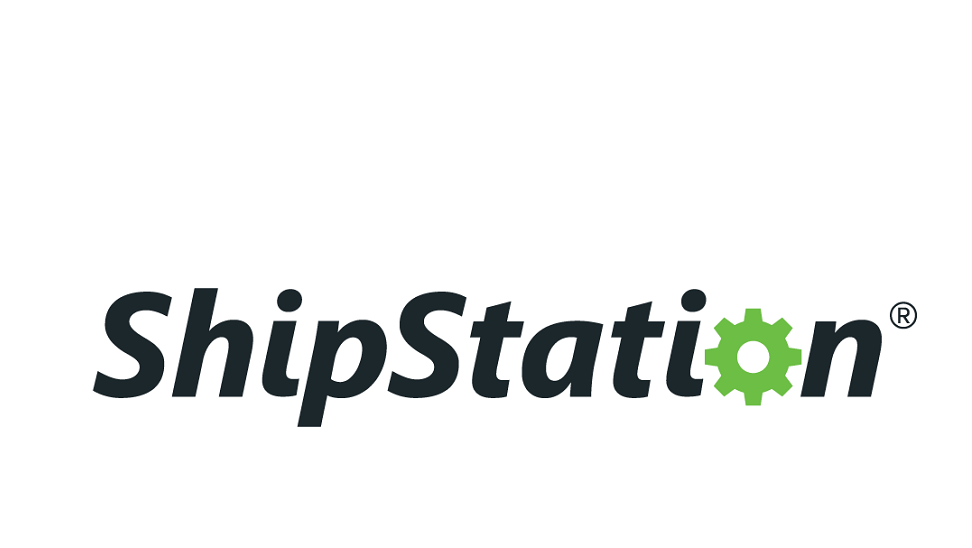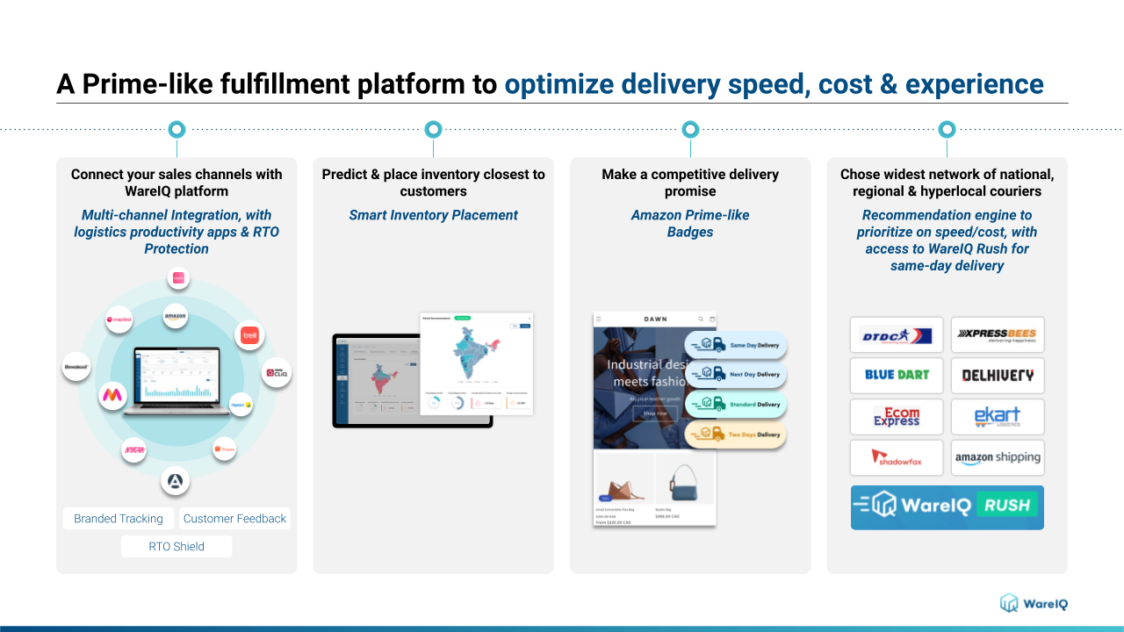What is Order Management & Order Processing? Definition, Importance, Key Features and Top 5 Order Management Software in 2024
If you are an eCommerce seller, your ultimate goal would be to sell hundreds of products daily. Once you start putting effort in the right direction with proper guidance then you will receive the targeted order requests sooner or later and have a bunch of buyers who trust your brand. Once you have found your niche in the eCommerce marketplace, the next step would be to streamline eCommerce order management for a better customer experience.
For this, you will have to get listed on multiple selling channels, keep a good amount of inventory, operate multiple eCommerce warehouses in different locations, enlist competent human resources, employ software to automate and streamline processes, and tie up with logistic companies, and much more. All of the above steps can be summarised as order processing or management.
It consists of every step that is related to online selling. An online seller may not be aware of some of these processes but their business will surely be involved if they have offloaded order management to a 3PL fulfillment company. To get a detailed understanding of order processing, how to perform it effectively, utilise all the benefits, and remove unnecessary time and resources, read ahead.
- What is Order Management?
- Why is Order Processing Important for eCommerce Businesses in 2024?
- Importance of Order Processing Management for eCommerce Businesses
- What are Order Management Processes?
- 6 Key Features of Order Management
- Top 5 Order Management Software in 2024
- Conclusion: Streamlining Order Management with WareIQ
- Order Management FAQs ( Frequently Asked Questions )
What is Order Management?
It refers to handling an eCommerce order from the very first step of receiving the order request from the customer to taking care of post-delivery processes like feedback, receipt of payment, reverse logistics, and maintaining the appropriate inventory levels. A company lacking proper order management will be unable to manage inventory and fulfill orders in a timely and efficient manner.
eCommerce companies operating in India have to serve the largest market in the world, consisting of 1.4 billion people, and have to manage eCommerce orders in every corner of this vast country. It is impossible to cater to every customer if you do not have the time and necessary resources to do so. After getting orders, you need to fulfill them, maintain inventory, and a lot more. For this, you need a large, dedicated workforce operating 24/7. Once you have this in place, it is a daily requirement to coordinate with them to provide effective order management.
WareIQ, an eCommerce fulfillment company, empowers online brands with a superior-tech platform to compete with Amazon like service levels by bringing their average delivery timelines from 5-10 days to 1-2 days.
Why is Order Processing Important for eCommerce Businesses in 2024?
Order processing is the process of receiving an order to deliver it. This is an essential aspect of retail order fulfillment in the eCommerce space, as reliability and accuracy lead to client satisfaction.
Picking, sorting, tracking, and shipping are the steps involved in order processing. Depending on the business, It can range from manual (handwritten on an order log sheet) to highly technological and data-driven (through online orders and automated order processing software).
Importance of Order Processing Management for eCommerce Businesses
Inventory Tracking
Before you receive orders, you must ensure you have adequate inventory. Both overstocking and understocking can be a weakness for your business. Overstocking can make you look like a sitting duck with less liquid cash. Conversely, understocking might result in delayed customer delivery, lowering your brand value.
Through Minimum Order Quantity and Economic Order Quantity, you can manage seasonal sales based on previous customer purchases. This way, you can avoid both over and understocking.
Accurate Order Fulfillment
When you have to take care of only a few orders, it is accurate to deliver but quite expensive to fulfill exclusively. However, when your business gets off the ground, you will get a hefty amount of orders regularly. Errors will become inevitable.
Your company’s reputation will be harmed if you deliver incorrect orders or have shipment delays. Order management software automates the process and eliminates the risk of human error.
Time-Saving
If you manage an eCommerce business, you are a visionary entrepreneur. Most of your resources will be spent on lengthy order fulfillment duties if you don’t manage orders in advance. You can employ a professional 3PL business to handle all of your order fulfillment tasks to avoid wasting important resources on all of these time-consuming duties.
What are Order Management Processes?
The order management process begins once a customer places and pays for an order. The order information is sent to the inventory department of the store, where warehouse staff handles the picking, packing, and shipping. The procedure concludes with the store contacting the consumer to see if they were satisfied with their purchase. The steps of the process are listed below:
Receiving Orders
The first stage begins when a consumer places an order. It includes the process of accepting a customer’s order and collecting the payment for it. After that, the purchase details are forwarded to warehouse management, where a related person can prepare the products for shipment.
Fulfilling Orders
Fulfilling an order is quite a long and complex process that includes several steps. A few of the important ones are:
Picking: The picking procedure, in which the items are picked from the warehouse, is the first step in fulfilling an order. Warehouses are typically lined with shelves packed with a variety of products, thus warehouse experts must be able to immediately and accurately select the ordered item. After the items have been picked, they are transported to a packaging station where they are packed.
Packing: The packing station is responsible for more than just packing products and transporting them. They’re also in charge of selecting the appropriate packaging materials for each product so that it arrives undamaged and in good shape to the buyer while also conserving resources.
Shipping: The next step is to ship the order after you’ve picked and packed everything correctly. At the shipping station, warehouse staff is normally responsible for four tasks:
- Attaching the necessary shipping label and invoice to the packed items
- Assigning it to the best logistics partner
- Marking an order as shipped in every selling channel
- Emailing the buyer with delivery confirmation and order tracking information like tracking ID and ETA.
All the above points are possible if a company has the products in stock. So, what happens when a consumer places an order for a product that a seller doesn’t have in stock? In such instances, businesses have two options: turn away the consumer or postpone the order delivery to a later date by using back-ordering or drop shipping methods.
Handling After-Sales Processes
Handling after-sales processes are the final stage of order management. Here, companies follow up with clients to get feedback and ensure that they are happy with their purchases, as well as returns management and refunds.
6 Key Features of Order Management
Supply Chain Visibility
It looks at the entire supply chain and isolates incidents to predict future difficulties and design more efficient steps.
Simplified Picking and Packing
It knows where the item exists in the warehouse after it identifies which fulfillment center is closest to the buyer. It then initiates picking the exact products, breaking down bulk orders into individual or batches so further that they can be fulfilled accordingly.
Inventory Management in Real-Time
It provides a singular view of inventory, including what’s in stock, in transit, and current demand levels, so you don’t have to rush shipments or keep excessive safety stock on hand which holds your cash flow.
Scheduled Delivery
Order management allows for more efficient service requests by matching delivery commitments to inventory, resources, and expertise.
Post Order Customer Engagement
Order processing assigns the placement of orders, sends them to be shipped, and informs the buyer. It also provides updates through the tracking ID. Additionally, it can predict the customer’s behavior and expectations so a seller can execute transactions more effectively.
Optimized Fulfillment
It analyzes data and provides recommendations based on how and where clients want their orders transported, their delivery time, and cost.
Top 5 Order Management Software in 2024
There is no such thing as a one-size-fits-all offering when it comes to order management software. Each solution has its own set of benefits and limitations, as well as onboarding and integration processes. The optimum fit for your company will be determined by your specific demands and objectives.
Here are a few of the most popular options to compare:
WareIQ

WareIQs custom WMS software aids in efficient order management by syncing inventory levels and consolidating order data across multiple platforms. It can also predict future demand levels and supply requirements to provide the optimum inventory levels for faster and more efficient execution.
NetSuite

NetSuite’s SuiteCommerce package includes an order management system that can handle orders from a range of channels, including a brick-and-mortar store, an online store, and even a kiosk.
SuiteCommerce aspires to be a comprehensive eCommerce platform that eliminates the need for third-party integration. It’s ambitious and powerful but it’s probably too much for a small eCommerce shop and the learning curve is severe.
SAP

SAP has flexible order management software. Here a seller can manage a high volume of goods and run complex operations with fully digitized and accelerated warehouse processes.
It is known for its on-premise and cloud deployments, comprehensive WMS solutions, fully integrated quality checks, production and track-to-trace processes, and real-time control of warehouse automation equipment.
ShipStation

ShipStation is a shipping program designed for eCommerce sellers.
It integrates with most marketplaces, shopping carts, and carriers, making it the go-to for small eCommerce firms looking to offload their fulfillment.
When DIY fulfillment is no longer viable, merchants must upgrade to a more scalable solution, such as outsourcing order management and fulfillment to a third-party logistics provider.
Brightpearl

Brightpearl is a retail management system designed for businesses with yearly sales of more than $1 million. They combine everything under one roof, from inventory and order administration to shipping, a POS system, and a CRM.
It’s powerful but also complicated. A simpler, more economical approach would probably be better for smaller businesses.
Conclusion: Streamlining Order Management with WareIQ
Now that you are aware of the importance of order management and may consider applying it to your business for better returns and less fatigue, the only factor that may restrain you is the investment required. However, offloading your order processing requirements to a 3PL could work out much cheaper than anticipated. It is possible to hire a third-party fulfillment company, such as WareIQ to manage your order fulfillment from beginning to end of each order placed.

WareIQ is a Y-combinator-backed start-up providing a full-stack eCommerce fulfillment service that gives users an Amazon Prime-like experience. Once a seller gets partnered with us, they can access several order management facilities at a very nominal cost with no minimum order quantity. You can take advantage of our expertise and accelerate the growth of your business.
What value does WareIQ’s technology platform add to the Order Management aspect?
- WareIQ’s order window helps you take a quick snapshot of any orders that require action
- Our platform is integrated with 20+ leading marketplaces, which facilitates the syncing of all your sales channels and eliminates the manual import of data
- It triggers all necessary shipping notifications to your end-customer
- It provides you with a timelines view of your order, and revenue data, allowing you to study the fluctuations and trends and make better business decisions
- It also provides you with easy-to-comprehend graphical data about your zone-wise distribution, delivery timelines, and channel distribution, thus helping you gauge the current state of business deeply and take necessary steps to move towards your ideal state if required
- Pan India Fulfillment & Darkstore Network: Plug-and-play fulfillment infrastructure with no minimums, which is compliant with Amazon Seller Flex, Flipkart Assured, Myntra and other marketplaces
- Inventory & Network Planning Excellence: Best-in-class AI models for sales forecasting, product segmentation, and inventory management to reduce inventory by 40% and increase revenue by 10%.
- Vertically Integrated Fulfillment Tech Stack: Our Fulfillment Tech Solution supports integrations with 20+ top marketplaces & D2C platforms, and prominent national, regional and hyperlocal couriers, enhancing reach by covering deliveries for 27,000+ pin codes
- Supply Chain Productivity Applications: Integrate a host of supply chain productivity apps with a single-click to your existing CRMs, ERPs & accounting software to manage your logistics workflows from one command center. Use Apps like RTO Shield to get 100% RTO protection, Branded Tracking to turn your order tracking page into a profitable marketing channel, and many more.
Trusted by 300+ top Indian brands, we are helping them accelerate online sales and expedite their growth through a synergistic combination of advanced technology, robust fulfillment infrastructure & seller enablement services!WareIQ is backed by leading global investors including Y Combinator, Funders Club, Flexport, Pioneer Fund, Soma Capital, and Emles Venture Partner.










